Photos by Scott Buschman
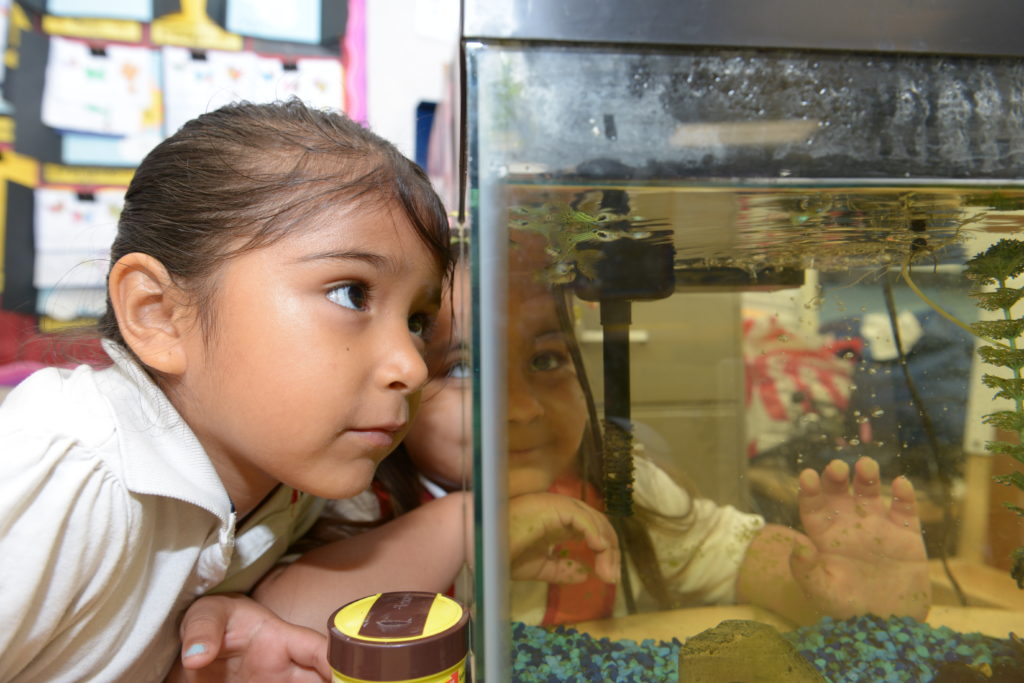
It’s an exciting day in Leo Rodriguez’s class. Students jump up and down with enthusiasm as they follow him to the playground for the big event.
“We’re going to let them go,” says Rodriguez, gesturing to a net containing monarch butterflies, which students saw metamorphose from caterpillars.
“Yay!” shout the students, as the butterflies emerge hesitantly from the net, then fly away.
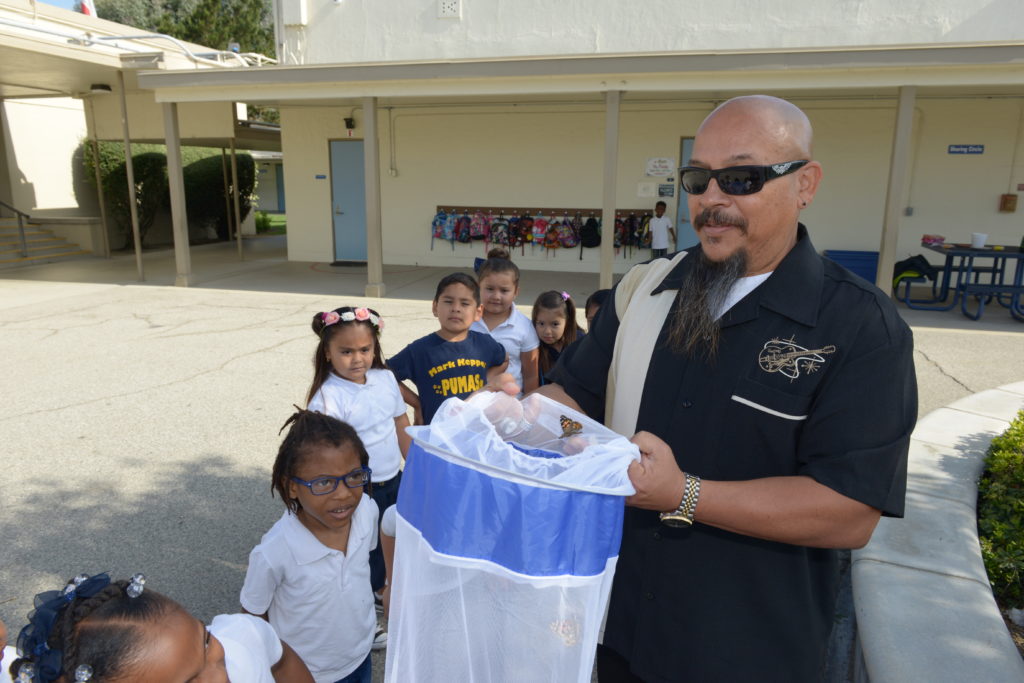
Learning is fun for Rodriguez’s students at Mark Keppel Elementary School in Paramount. They sing songs as their teacher strums guitar, play house, dress up as police officers and firefighters, and create artwork with sparkles and ribbons. They also study numbers and learn how to read basic words.
They attend transitional kindergarten (TK), which is neither preschool nor kindergarten. In many ways, it is how kindergarten used to be, before high-stakes testing and No Child Left Behind turned kinder classrooms into pressure cookers by pushing down academics previously taught in older grades. (NCLB has since been replaced by the Every Student Succeeds Act.)
A bold California experiment
Students in Rodriguez’s TK class would have been old enough to attend traditional kindergarten under the old guidelines, which allowed children as young as 4 years and 9 months to enroll. California raised the kindergarten age to 5 in 2010 with the Kindergarten Readiness Act.
To accommodate the 4-year-olds who were previously eligible for kindergarten — those who turn 5 between Sept. 2 and Dec. 2 — TK was established as a brand-new grade level and gradually implemented. By 2014, district were required to offer the state-funded program to eligible youngsters.
According to the California Department of Education (CDE), more than 100,000 students were enrolled in TK during 2016-17. The CDE estimates that California spent more than $713
million on TK programs in 2017-18.
TK and kindergarten are not mandatory in California. The law requires children to be enrolled in school on their sixth birthday.
TK is not a remedial program. It is considered the first year of a two-year kindergarten program offering age-appropriate curriculum. The goal is for students to acquire the maturity, confidence and skills necessary to thrive in their second year of kindergarten (and beyond), with a focus on teaching in a manner that jibes with children’s stages of development.
Rodriguez, who has taught elementary school since 1983, was assigned to teach TK three years ago because he was the only teacher at his school with an early childhood background. The CDE requires that all TK teachers meet the credential requirements to teach kindergarten. Rodriguez told his principal he didn’t want to teach children who cried and wet their pants. But he found himself embracing the new grade level.
“After my first year in TK, I told my principal to leave me here forever, because I love it,” says the Teachers Association of Paramount member, who was recently voted Teacher of the Year at his school. “I am creative again. I’m happy to go to work every day. Yes, I have the criers and th wetters, but the smiles and growth I see every month are incredible Teachers rave about the children that come from my classroom, saying they are better prepared than other children entering kindergarten.”
TK offers “gift of time”
Students are learning how to read their names with the help of TK teacher Michelle Bremner, as well as the names of farm animals including pig, cow and sheep. But less obvious are the hidden skills they are learning that will help them succeed in kindergarten, such as how to hold a pencil, sit in a circle, take turns speaking, share toys, be good listeners, and transition from one activity to another.
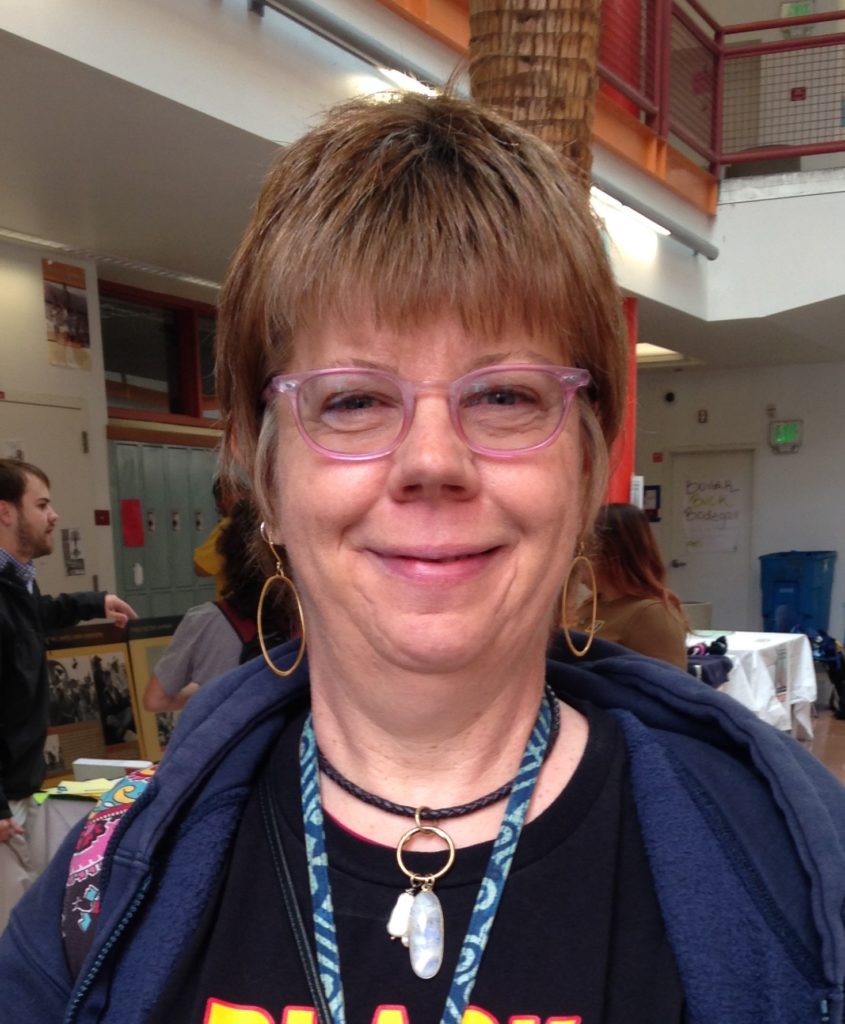
“ TK students know how a school works and are ready to be part of it. When kids come in to kindergarten knowing that stuff, I can go right to academics.”
— CATHERINE SULLIVAN,
United Educators of San Francisco
“They are developing a love of learning and working on their social skills,” says Bremner, a teacher at Cresson Elementary School in Norwalk and member of the Little Lake Education Association. Like Rodriguez, the former kindergarten teacher was asked to teach TK because she had a background in early childhood.
When she taught kindergarten, curriculum was fast-paced and did not always coincide with a child’s readiness or maturity level, she recalls. Students did not have time to explore or engage in play-based learning. In TK, there is less pressure and more time for children to build a foundation of learning that will help them succeed not only in kindergarten, but throughout their school years, she believes.
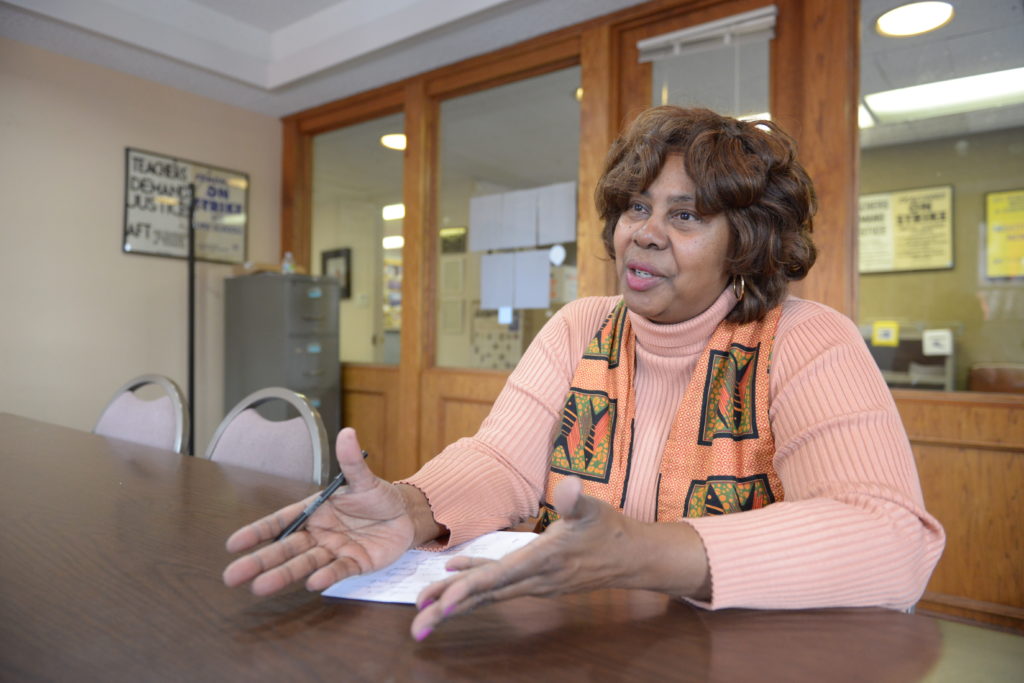
“ TK isn’t perfect, but it’s definitely improving educational outcomes for students and helping to close the achievement gap in California.”
— ELAINE MERRIWEATHER,
United Educators of San Francisco
“TK gives children the gift of time. It allows them to enter kindergarten with a base in academics such as reading, writing and numbers, but also teaches them to be good students and good citizens. TK is a wonderful investment for our children.”
The full-time TK program was so successful, her district decided to open it up for students who turned 5 between Sept. 2 and March 2. A new state law allows school districts to expand accessibility and enroll children in TK if they turn 5 after the Dec. 2 cutoff birthdate but before the end of the school year. However, districts are not required to offer expanded TK. Of the state’s 25 largest districts, only six make it available, including San Diego, Long Beach and Los Angeles unified school districts, reports EdSource.
“At first I was apprehensive when the district increased accessibility, but I’m really glad they did,” says Bremner. “Kindergarten teachers
are really seeing a difference in terms of child readiness.”
Ready for kindergarten
“There’s definitely a difference since TK, and it’s been very positive,” says Catherine Sullivan, a kindergarten teacher for 19 years in San Francisco. “Students coming from TK know how to hold a pencil correctly, wait their turn, and ask for help. They know how a school works and are ready to be part of it. When kids come in knowing that stuff, I can go right to academics. TK has definitely made my job easier.”
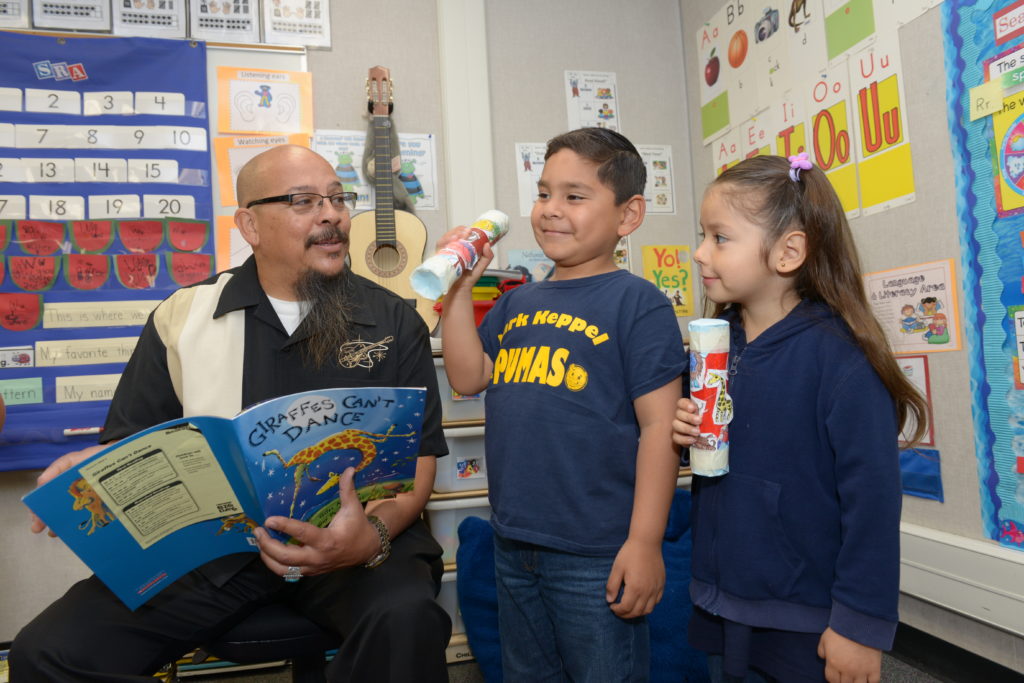
School in Paramount.
Having younger kindergartners wasn’t problematic until NCLB, she recalls, when expectations were bumped up. “Suddenly there were more abstract things to teach that some students couldn’t grasp.”
Since TK was implemented, fewer students are repeating kindergarten in her school, says Sullivan, noting that before TK, younger students were disproportionately recommended for a second year of kindergarten. Studies show that children who repeat a grade while their peers advance to the next grade level have more behavior problems and struggle with self-esteem. The state does not collect data regarding kindergarten retention changes since TK implementation.
Does TK need separate standards?
Elaine Merriweather, a preschool teacher, literary coach and workshop presenter for 25 years in San Francisco Unified School District, was among those who fought to make TK available in California. The early childhood education expert was ecstatic when Gov. Jerry Brown signed legislation requiring districts to do so. She believes TK helps level the playing field between students who are poor and those who are not.
(According to the CDE, half of TK students receive free or reduced-price lunch. Approximately 57 percent of TK students are Hispanic, 21 percent white, 8 percent Asian, and 5 percent African American; 9 percent of TK students receive special education services.)
Merriweather, executive vice president of United Educators of San Francisco (UESF), served as a National Early Childhood Cadre member for the American Federation of Teachers. She was also on the CDE’s Early Learning Division of Stakeholders, where she reviewed and shared input on TK curriculum modules, which were later made available to educators so they could see what age-appropriate instruction for TK looks like.
TK has no specific standards, so TK teachers combine the Common Core State Standards for kindergarten and the state’s Preschool Learning Foundation Standards to create lessons.
“TK really should have its own standards,” says Merriweather. “It can be confusing, because TK is not preschool and it’s not kindergarten; it’s somewhere in the middle.”
Because there has been confusion surrounding TK, some administrators in her district have pressured TK teachers to structure their classes more like kindergarten to prepare students for becoming test-takers. Merriweather explained to them that this is not in the best interest of children and defeats the purpose of TK.
“Children this young are not developmentally ready for kindergarten. We are just beginning to understand the value of TK and how it provides students with the skills they need to be successful.”
TK teachers in San Francisco have requested more paraprofessionals in the classroom to help meet the needs of their young students. Paras assist TK classes for the first three months of school. This isn’t enough time, says Merriweather, so UESF has asked for more.
“TK isn’t perfect,” says Merriweather, “but it’s definitely improving educational outcomes for students and helping to close the achievement gap in California.”
Research shows that participation in high-quality early education programs improves school readiness and contributes to better outcomes in school and beyond. A June 2017 report by the American Institutes for Research found that transitional kindergarten:
Little Kids, Big Impact: Special report on Early
Childhood Education
Research clearly shows that children who attend high-quality preschool, or who enroll in transitional kindergarten, get a jump on learning and social skills. Preschool and TK can also have lasting effects into children’s later years of school and life. With almost $2 billion earmarked for early childhood education (ECE) in Gov. Gavin Newsom’s proposed budget, we look at ECE efforts in the state and how educators and students benefit.
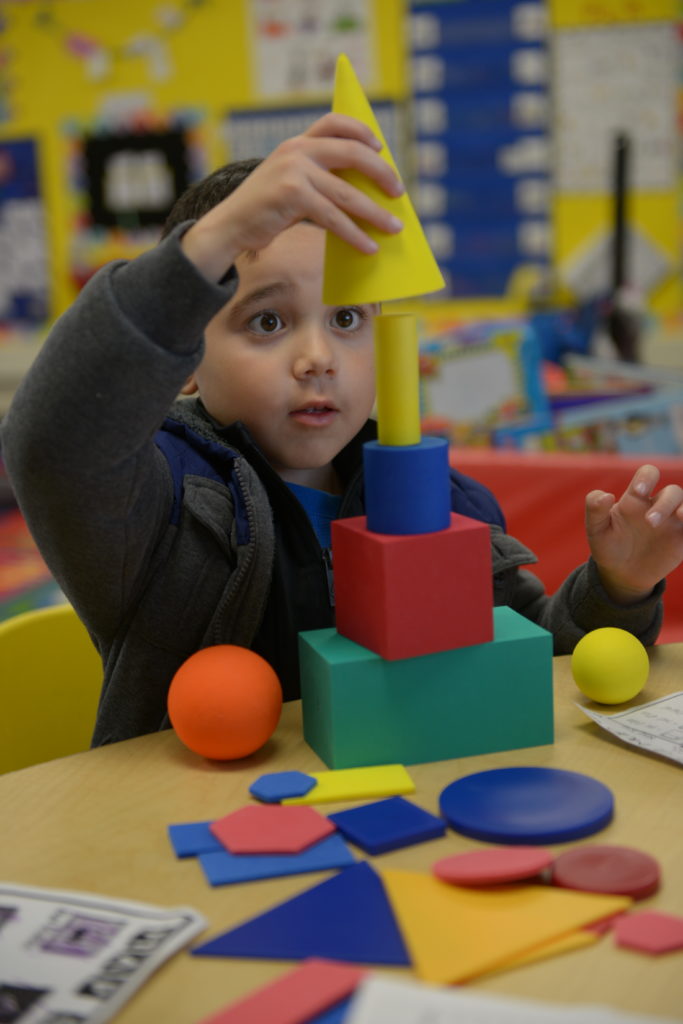
A model preschool program in Lindsay
The rural school district offers free preschool to all, with marked success
Expert Q&A: Preschool’s positive impacts
A Learning Policy Institute researcher and analyst weighs in
TK improves student outcome
TK especially impacts students literacy and math skills
What educators want you to know
Insights from early childhood education teachers, specialists
TK from a parent’s perspective
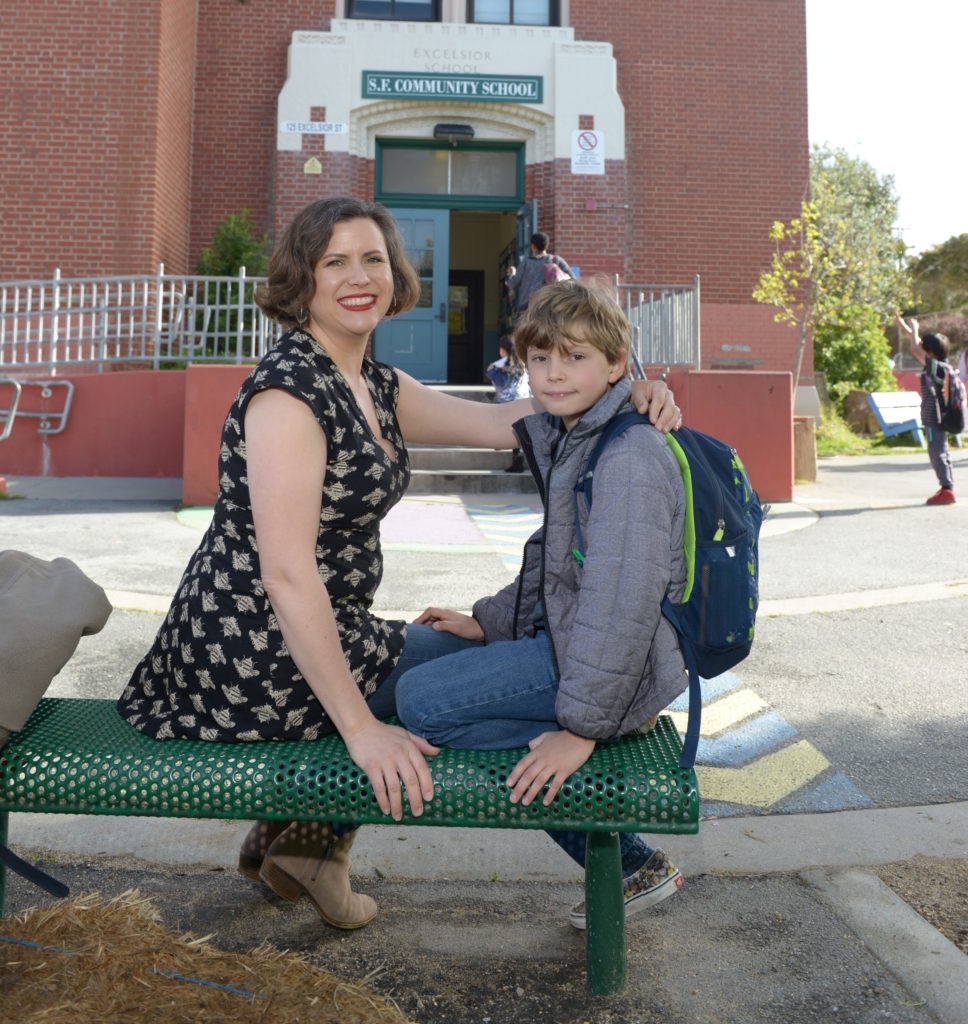
Neal Pretto is thriving in second grade at Community School in San Francisco, where he is nicknamed the “Little Professor” and enjoys his school’s emphasis on project-based learning.
“He’s a good student,” says his proud mother, Lexie Pretto, an English teacher at Woodside High School and member of the Sequoia District Teachers Association. She credits much of Neal’s success to attending a transitional kindergarten program in San Francisco that prepared him for the rigors of kindergarten.
“I liked TK a lot,” says Neal. “I learned a lot of stuff that I wouldn’t have learned if I had spent another year in preschool.”
When he entered TK, he was a 4-yearold boy full of energy and didn’t want to sit still, his mother recalls. Neal was more interested in playing with blocks and manipulatives than academics. She worried briefly that he had ADHD, but those fears evaporated after a few months in TK.
“He needed to learn the ropes of being in school, and by the time he was ready for kindergarten, he was ready to be an awesome kindergartner.”
TK helped Neal understand how to listen and pay attention. Students practiced yoga, and Neal learned how to center his body so he could focus. Because TK was fun, he viewed school as something positive and enjoyable, and this perception stays with him to this day.
Pretto is grateful that Neal had the opportunity to thrive in the fun, stimulating and relatively pressure-free environment that TK provided.
“TK was a terrific move from the state. From my own personal experience, I know how beneficial it can be.”
Has TK decreased “redshirting”?
Are fewer families “redshirting” students due to the availability of transitional kindergarten?
It’s unknown how many parents are choosing to enroll their child in TK rather than delay kindergarten by an extra year. But it seems likely that most parents are choosing TK if their children are eligible, because there is no cost.
Students who were redshirted before TK was available may have had an advantage over students who were not. A 2012 Stanford report, “The Extent, Patterns, and Implications of Kindergarten ‘Redshirting,’” published before TK was fully implemented, found that it occurred with approximately 4 percent of kindergarten-eligible students, most of them white and affluent.
According to the report, the most common reason for redshirting was that parents feel their child lacks the maturity necessary to be successful in kindergarten. However, some parents delay kindergarten so their child would be bigger, stronger and more athletic compared to his or her peers. In fact, the term “redshirting” refers to athletes who delayed college competition by a year so they could develop athletic skills and extend their eligibility timeline.
The state does not keep statistics on redshirting or the percentage of parents who opt for TK.
The Discussion 0 comments Post a Comment